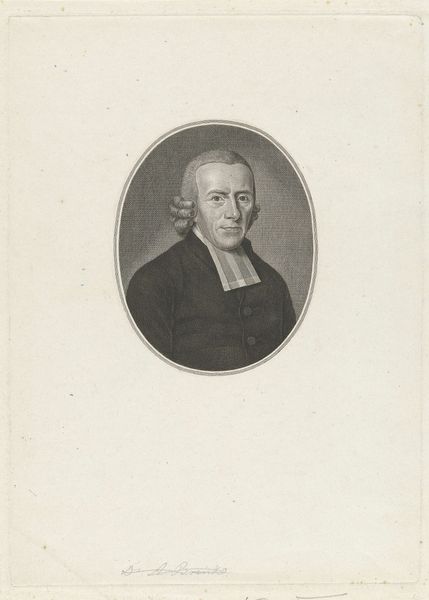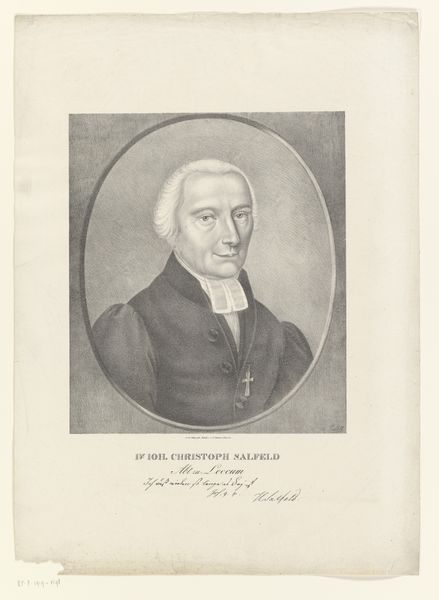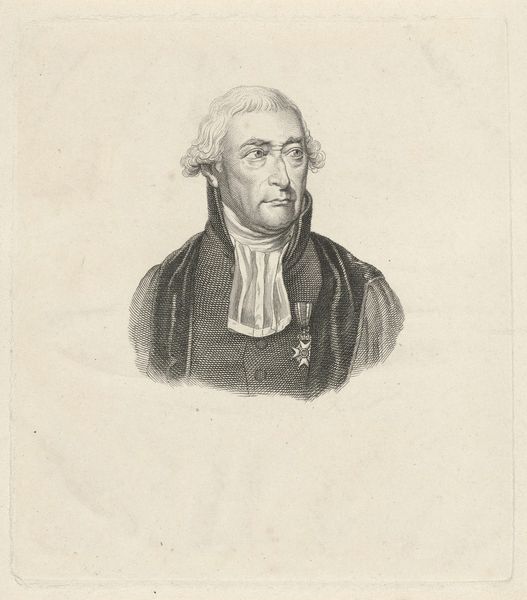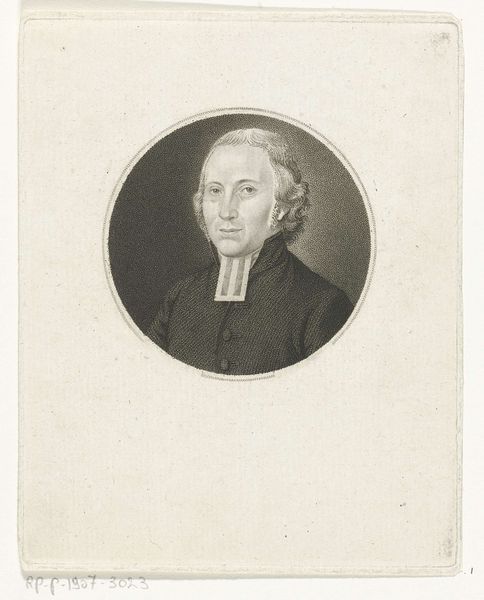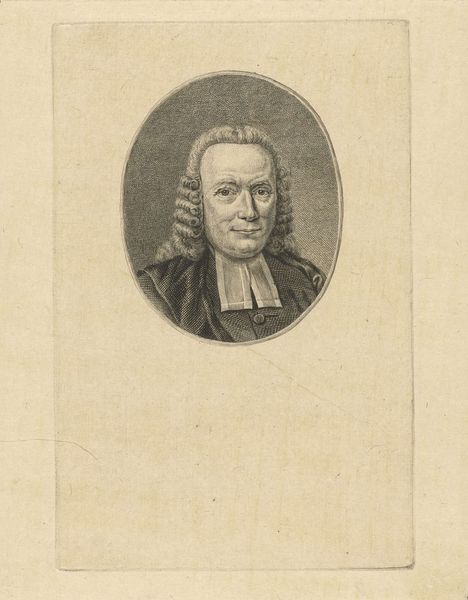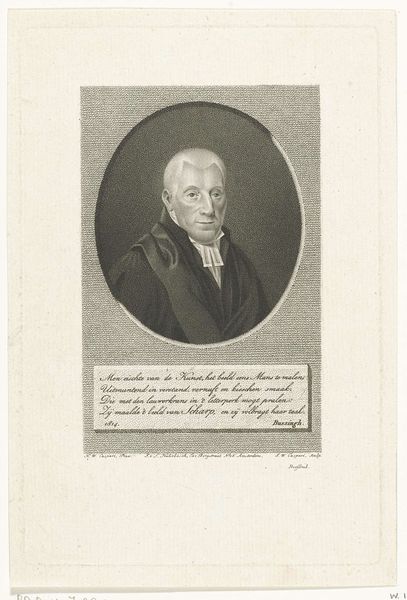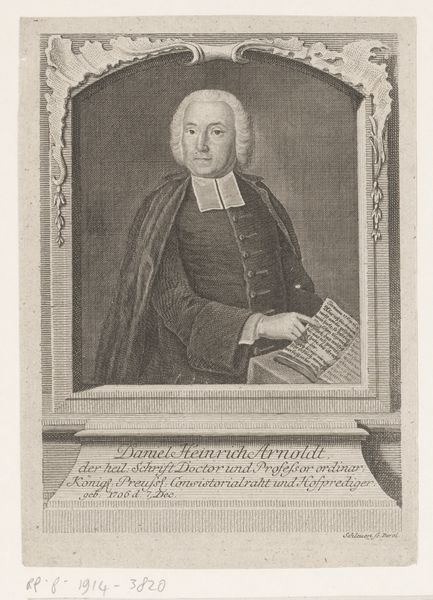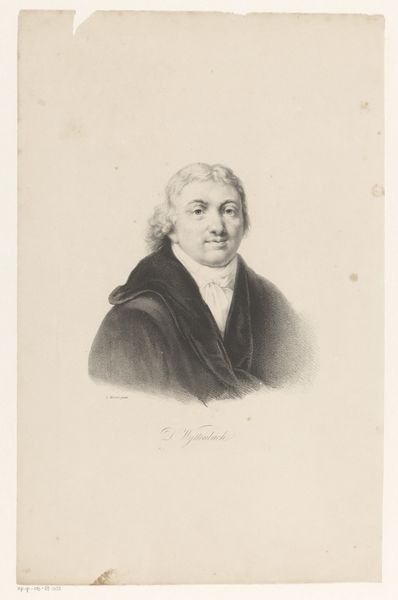
Dimensions: height 183 mm, width 115 mm
Copyright: Rijks Museum: Open Domain
Friedrich Rossmässler made this portrait of Christian Gottlieb Kühnöl, using etching and engraving, sometime in the early 19th century. The magic of etching and engraving lies in the precise control it offers. By drawing through a protective layer on a metal plate, and then exposing it to acid, Rossmässler could create lines of varying depth and thickness. These marks, when inked and printed, give the portrait its striking clarity and detail. This was a period when printmaking served a vital function, reproducing images for a broad public. These aren't traditional art materials; this is an industrial process. Consider the labor involved: the careful preparation of the plate, the controlled application of acid, the skilled inking and printing. Each step demands precision and expertise. The proliferation of prints democratized art, making images accessible beyond the elite. By understanding these methods, we appreciate not only the image itself, but also the social and economic forces that shaped its production. It challenges the idea that art exists solely in the realm of unique masterpieces.
Comments
No comments
Be the first to comment and join the conversation on the ultimate creative platform.

